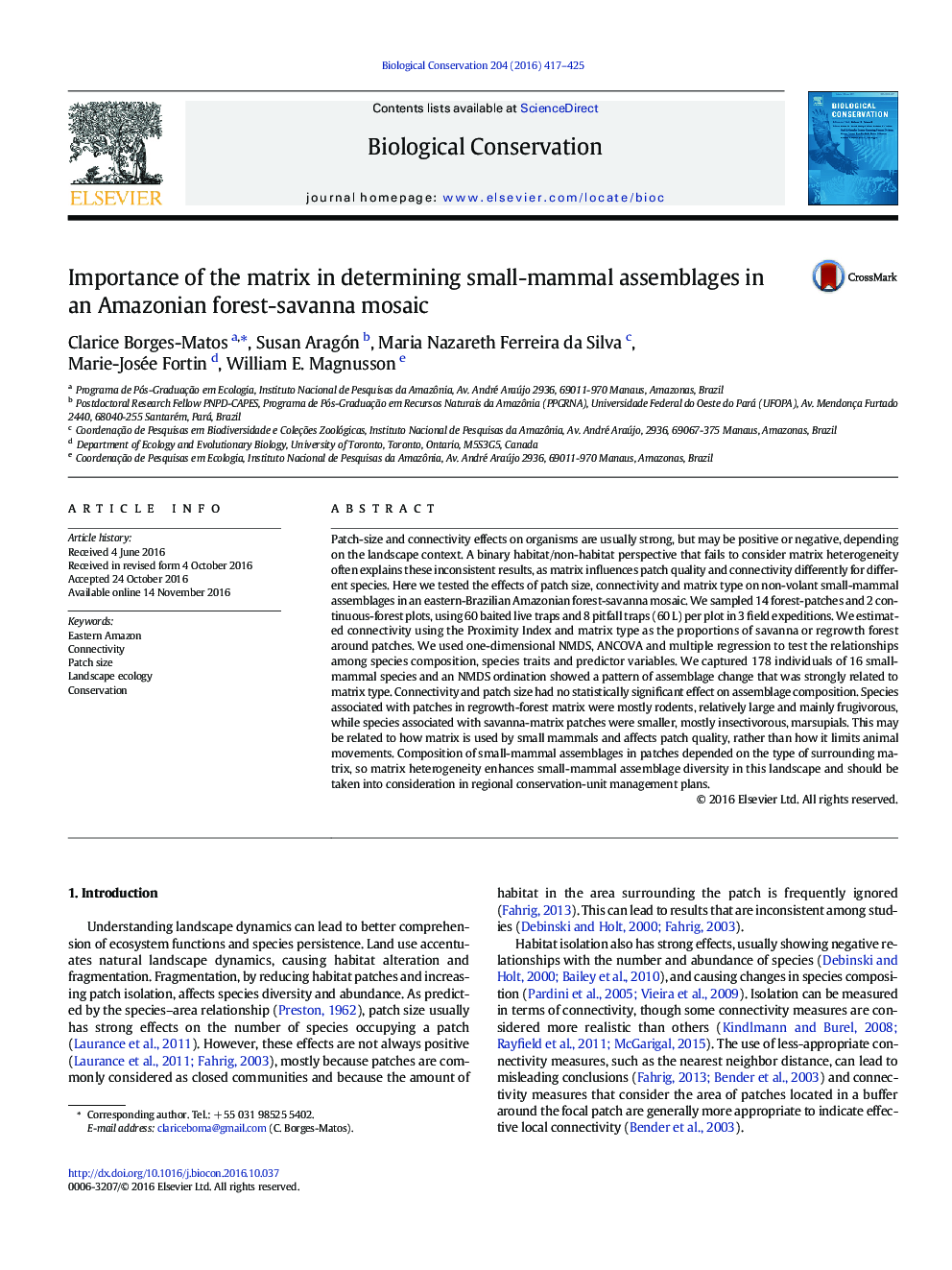| کد مقاله | کد نشریه | سال انتشار | مقاله انگلیسی | نسخه تمام متن |
|---|---|---|---|---|
| 5743419 | 1412305 | 2016 | 9 صفحه PDF | دانلود رایگان |
- Matrix quality predicted small-mammal species composition in Amazon-forest patches.
- Patch size was not significantly related to species composition.
- Connectivity had only a small effect on species composition.
- Species in patches with different matrix types had different functional traits.
- Matrix diversity is key to small-mammal conservation in fragmented landscapes.
Patch-size and connectivity effects on organisms are usually strong, but may be positive or negative, depending on the landscape context. A binary habitat/non-habitat perspective that fails to consider matrix heterogeneity often explains these inconsistent results, as matrix influences patch quality and connectivity differently for different species. Here we tested the effects of patch size, connectivity and matrix type on non-volant small-mammal assemblages in an eastern-Brazilian Amazonian forest-savanna mosaic. We sampled 14 forest-patches and 2 continuous-forest plots, using 60 baited live traps and 8 pitfall traps (60Â L) per plot in 3 field expeditions. We estimated connectivity using the Proximity Index and matrix type as the proportions of savanna or regrowth forest around patches. We used one-dimensional NMDS, ANCOVA and multiple regression to test the relationships among species composition, species traits and predictor variables. We captured 178 individuals of 16 small-mammal species and an NMDS ordination showed a pattern of assemblage change that was strongly related to matrix type. Connectivity and patch size had no statistically significant effect on assemblage composition. Species associated with patches in regrowth-forest matrix were mostly rodents, relatively large and mainly frugivorous, while species associated with savanna-matrix patches were smaller, mostly insectivorous, marsupials. This may be related to how matrix is used by small mammals and affects patch quality, rather than how it limits animal movements. Composition of small-mammal assemblages in patches depended on the type of surrounding matrix, so matrix heterogeneity enhances small-mammal assemblage diversity in this landscape and should be taken into consideration in regional conservation-unit management plans.
Journal: Biological Conservation - Volume 204, Part B, December 2016, Pages 417-425
